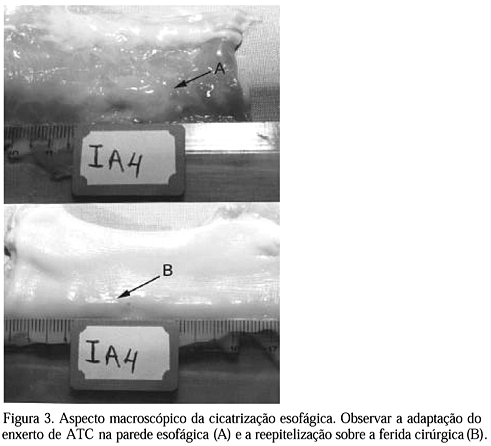Eighteen sheep were equally divided into two groups (I and II) and into four subgroups (Ia, Ib, IIa, IIb) according to two distinct periods of time previously set for postoperative observation. Subgroups a and b were maintained under observation for 45 and 60 days, respectively. All animals had undergone an esophageal segment excisions of 1.5×2.5cm which were corrected with a biological graft conserved by a period between 30 and 90 days in glycerin 98%. A thoracic aortic graft was used in group I and canine fascia lata graft in group II. Postoperative evaluation consisted of clinical observation as well as laboratorial and radiographic exams. At the end of each period, the animals from corresponding groups were euthanized and the esophageal segments were evaluated macro and microscopically. It was observed that these heterografts were resistant to the passage of food and efficient in the closure of esophageal wounds, offering adequate surface for epithelial regeneration.
Sheep; biological graft; esophagus



